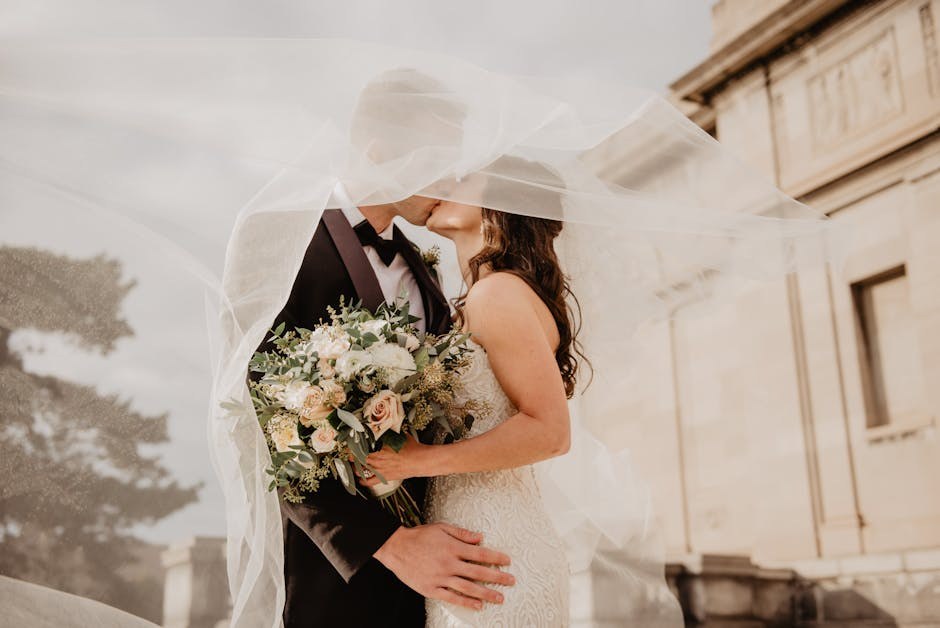Not every commitment is a whirlwind romance-some couples choose a steady, companionable path that prioritizes trust, practical support, and shared life goals. That choice often goes by a clear name: platonic marriage. In this arrangement, two people formalize a partnership without centering it on romantic love. For many, this model provides stability and belonging without the pressure to sustain sparks that may not be important to them. A platonic marriage is still a commitment under the law and a daily promise in private life, just shaped by friendship first.
Because we’re taught to expect grand gestures and cinematic chemistry, a platonic marriage can seem puzzling at first glance. Look closer and it becomes easier to understand-two adults decide what kind of partnership suits them and then build it with consent, honesty, and care. The law recognizes the contract, not the feelings, and friends can be excellent co-architects of a household. Whether the motivation is companionship, co-parenting, shared values, or simple contentment, a platonic marriage can be a fully intentional way to live.
What a platonic marriage actually means
At its core, a platonic marriage is a bonded partnership without romance at the center. The people involved care deeply for each other-often with the fondness you feel for family or a lifelong friend-yet they don’t define the relationship by dating-style intimacy or a sweeping love story. In many cases, sexual activity isn’t part of the arrangement; in others, intimacy appears rarely or not at all. The crucial detail is mutual understanding: both partners know that the connection prioritizes companionship and shared responsibilities over romantic chemistry. That clarity is what allows a platonic marriage to work.

In daily life, that can look wonderfully ordinary. Partners in a platonic marriage split bills, make meals, plan holidays, and cheer each other on at medical appointments or job interviews. They consult on big decisions, from housing to pets to parenting. Some sleep in the same bedroom; others set up separate rooms and enjoy personal space. What holds everything together isn’t romance-it’s reliability, kindness, and the comfort of a trusted presence.
“Marry your best friend”-so what’s different here?
Many people hear the advice to marry a best friend. Typically that phrase assumes romance is also present-friendship plus passion, not friendship alone. A platonic marriage flips the emphasis. The friendship is the main event, and romance never takes center stage. That difference matters because it reshapes expectations: anniversaries might be celebrated with home-cooked dinners rather than candlelit clichés, conversations about attraction are straightforward rather than ambiguous, and the couple defines boundaries with intention. A platonic marriage is the friendship-first version of lifelong partnership, not a romance that incidentally includes friendship.
Why some couples choose this path
Motivations vary, but they tend to be clear-eyed and practical. Below are common reasons-sometimes overlapping-people give for choosing a platonic marriage. The list doesn’t claim to cover every possibility; it simply reflects familiar patterns that show up when two friends decide to share a life.

They want a family without waiting for romance. Biological timelines can feel unforgiving, and not everyone meets a romantic partner on a convenient schedule. Two friends may align on values-stability, kindness, a safe home-and decide that a platonic marriage is the surest way to co-parent with someone they respect. They see the household as a team effort, and a platonic marriage supplies the framework to start sooner rather than later.
They made a longstanding pact. Plenty of friends joke about marrying each other if neither has met a romantic partner by a certain age. Sometimes the joke matures into a plan. When both people still like each other, still trust each other, and still want similar things, a platonic marriage can honor the spirit of that early promise while giving it real shape-shared bills, shared plans, and a shared roof.
They’re ready to settle into a calmer life. After years of dating, travel, or career hustle, someone might crave routine. If two friends feel that pull at the same time, a platonic marriage can deliver it-quiet evenings, scheduled grocery runs, and predictable weekends. The appeal isn’t fireworks; it’s knowing who will be there when you get home.

They are aromantic-or otherwise uninterested in romance. Some people simply don’t experience romantic attraction, and others prefer not to build their lives around it. For them, a platonic marriage can be an affirming fit, because the partnership doesn’t ask for feelings they don’t have. The arrangement centers on companionship and shared purpose, which is exactly what they want.
They prefer privacy and social ease. In certain contexts, presenting as a couple simplifies social situations-holiday invitations, housing discussions, or family expectations. While society continues to evolve, some friends choose a platonic marriage to navigate social life with fewer questions. The bond explains itself: they’re partners in the practical sense, even if romance isn’t part of the picture.
They already function as each other’s favorite person. Best friends often operate like a small family-checking in, sharing chores on trips, showing up during crises. If that rhythm feels like home, formalizing it through a platonic marriage can be a natural next step. Some couples also agree that each may pursue romantic relationships separately or not at all; the friendship remains the stable core.
A romantic marriage softened into friendship over time. Feelings change. Two people can start with passion and later find that what remains is genuine affection and a strong partnership. Instead of divorcing, they may redefine the relationship as a platonic marriage-keeping the household intact, preserving family rhythms, and honoring a bond that still matters even without romance.
They love each other-but not in a romantic way. Love is a wide word. Someone might feel protective, admiring, and grateful toward a friend without feeling romantic pull. Rather than chasing a different dynamic, they may choose a platonic marriage to safeguard the kind of love they already have-steady, loyal, and unlikely to vanish with time.
They want to co-parent after a separation. Not all breakups are bitter. Some former spouses become genuine friends and decide that staying under one roof as partners-just not romantic ones-works best for the children and the logistics of life. Redefining the relationship as a platonic marriage lets them prioritize family routines while removing the pressure to rekindle romance.
They find practical benefits compelling. Shared finances, shared housing, and shared coverage can be persuasive. A platonic marriage may make it easier to manage insurance, taxes, or caregiving when one person has health needs. The motivation here is transparency: the couple agrees on the practical reasons and structures their household accordingly.
They simply don’t want to live alone. Companionship counts. After disappointments or the fatigue of dating, two friends may decide that everyday life-morning coffee, late-night TV, someone to feed the cat-matters more than romance. A platonic marriage turns that understanding into a commitment they can rely on.
How expectations work inside this arrangement
Clarity is the engine that keeps a platonic marriage running smoothly. Because the relationship isn’t organized around romance, expectations must be explicit. Partners decide how they’ll divide chores, whether they’ll maintain separate bedrooms, and how they’ll present themselves socially. They talk through holidays with extended family, financial planning, and how much alone time each person needs. Those conversations-sometimes tricky, always worthwhile-prevent hidden resentments from taking root.
Intimacy looks different, too. Affection may be expressed through small courtesies: packing lunch before an early shift, keeping the car gassed up, saving the last slice of pie. Physical closeness may be minimal or comfortably familial. The important part is that both people feel safe and seen. In a platonic marriage, attention itself is a love language-consistent, kind, and practical.
Outside relationships and boundaries
One question often arises: if romance isn’t part of the couple’s own dynamic, can either partner date? In some versions of a platonic marriage, the answer is yes, with clear guidelines-communication about schedules, privacy around personal details, and agreed-upon rules about introducing partners to the household. In other versions, neither person seeks outside relationships because the household already satisfies their needs. There’s no single correct approach; the point is to set boundaries together and revisit them as life evolves.
Those boundaries extend beyond dating. Friends, hobbies, and independent goals belong inside the conversation. A platonic marriage thrives when each partner keeps a sense of self-book clubs, pickup soccer, graduate classes-while still showing up for the shared home. The balance isn’t romantic versus platonic; it’s independence alongside interdependence, supported by frank discussion and mutual respect.
Co-parenting within this framework
When raising children is part of the plan, a platonic marriage can offer a stable foundation. Partners can coordinate bedtime routines, school logistics, and discipline approaches without the friction that sometimes stems from mismatched romantic expectations. They choose values together-kindness, honesty, curiosity-and build family rituals that fit their style. If romance isn’t present, neither is the anxiety about whether it “should” be, which can free up energy for patient parenting.
Explaining the arrangement to children can be simple and truthful: the adults in the house are a team. They share responsibilities and care for each other. They may not kiss on the couch, but they read bedtime stories and fix leaky faucets. Over time, the consistency speaks for itself. A platonic marriage is less about defining what’s missing and more about showing what’s there-reliability, laughter, and a safe place to grow.
Social perceptions and private reality
Because the phrase can sound unusual, people sometimes project assumptions onto a platonic marriage-calling it a stepping-stone, a secret, or a compromise. The inside view is usually more straightforward. Two adults have weighed their options and decided that a friendship-based home best suits their personalities and goals. They’re not “settling” so much as designing life on purpose. When questions come up, a simple explanation often suffices: this is our partnership, and it works for us.
Over time, friends and relatives typically adjust. They witness the household functioning-bills paid on time, birthdays remembered, crises handled with grace-and their curiosity cools into acceptance. The couple’s confidence helps, too. A platonic marriage thrives when the partners speak about it without apology, because self-assurance sets the tone for how others respond.
Comparing platonic marriage to romance-led marriage
Both frameworks share many of the same moving parts: communication, fairness, and loyalty. The difference is emphasis. In a romance-led marriage, attraction and couplehood rituals carry significant weight-date nights, anniversaries, the private shorthand of lovers. In a platonic marriage, the spotlight falls on teamwork and logistical harmony. Neither model is automatically easier; both succeed when people show up consistently and talk honestly about needs. If there’s a secret at all, it’s ordinary: respect the person you live with and keep your promises.
Common misconceptions
“It must be a backup plan.” For many, it isn’t. A platonic marriage can be a first-choice design, not a consolation prize. Choosing it deliberately is an act of alignment, not defeat.
“It’s cold or loveless.” Warmth doesn’t require romance. A household can be affectionate, funny, and emotionally rich while remaining platonic. Love has many shapes, and a platonic marriage simply chooses one of them.
“It can’t last.” Longevity depends on behavior-keeping agreements, learning from conflict, and showing everyday care. Those habits sustain any partnership, including a platonic marriage.
Daily life, quietly meaningful
There’s a gentle rhythm to a well-matched platonic marriage. Morning routines settle in-one person takes the dog out, the other starts coffee. Bills are calendared; chores are split in ways that respect strengths. Weekends might mean hardware-store errands or lazy brunch at home. Vacations can be practical-visiting family, hiking new trails-or simply restful, like a few days with books and board games. Because the couple defines success on their own terms, small rituals carry satisfying weight.
Conflicts still happen, of course. Someone forgets to run the dishwasher; someone says yes to a commitment the other didn’t want. The difference is in how repair happens. Without the volatility that sometimes accompanies romantic hurt, apologies can be prompt and direct. A platonic marriage relies on this steady form of care-less fireworks, more follow-through.
Are they missing out on romance?
This is the question that lingers for many onlookers: if a couple embraces a platonic marriage, are they losing something essential? The answer depends on what the people inside the partnership value. Some don’t experience romantic longing in the first place. Others have tried romance and found that the peace of a friendship-based home matters more than butterflies that fade. Life isn’t a single template-choosing a platonic marriage simply selects a different route to fulfillment.
Movies and fairy tales often paint love as dramatic rescues and sweeping kisses. Real life is quieter-rent due on the first, a sick cat at 3 a.m., a lawn that needs mowing, a hard week that calls for takeout and a kind word. In that world, the daily reliability of a platonic marriage can feel like exactly the right solution. What counts isn’t whether a relationship looks like a storybook; it’s whether the people involved feel secure, respected, and at ease.
Ultimately, a partnership built on friendship can be just as intentional as one built on romance. When both people consent to the structure, communicate openly, and keep choosing each other’s well-being, a platonic marriage offers a stable, thoughtful way to share a life. If that alignment brings them contentment, that’s the success that matters-no grand finale required, just two allies moving through the world side by side.